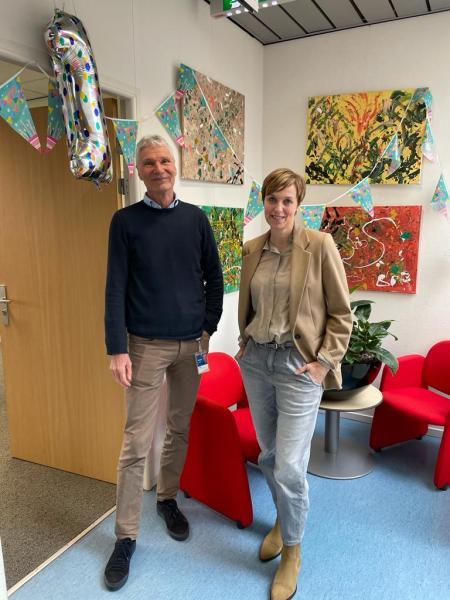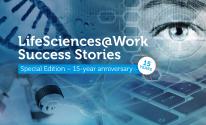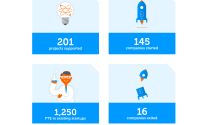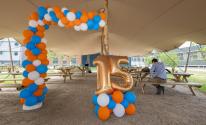
The creation of InnoSIGN
and its one year anniversary
INTERVIEW
with Sigi Neerken & Paul van de Wiel
In this interview, Sigi Neerken and Paul van de Wiel tell us how their participation in the Venture Challenge contributed to the creation of 'InnoSIGN'. Both were engaged in the research department at Philips for years before starting this spinoff company.
Starting the journey
Van de Wiel and Neerken both have a history at Philips. Neerken started as a researcher in 2001. During this time, Philips was exploring health-related opportunities within the company. Van de Wiel was department head at Philips Research. In 2009, Neerken and Van de Wiel participated together in the Venture Challenge (VC) with one of the projects, under the name “Polaris”, to see if the idea could be turned into a business plan. However, instead of starting a new company based on the business plan that Van de Wiel and Neerken produced, Philips took the decision to sell the Polaris technology to the Belgian company Biocartis.

The Sequel to Polaris
After participating in the Venture Challenge, Neerken was involved in account management at Philips until she stumbled upon a project in which Van de Wiel was in the lead; today’s InnoSIGN. ’After some years of research, we convinced the Philips management to start an internal venture to bring this promising technology to the market. Van de Wiel became the General Manager and and me the Chief Business Officer’, says Neerken.
Van de Wiel adds: ‘But after four years, the conclusion was that the project did not match Philips strategy.’ He continues: ‘We then took the step of seeking external funding, which resulted in a spin-out of the technology and the founding of InnoSIGN. I still find it unbelievable that we celebrated the 1-year anniversary of InnoSIGN on 8 March 2023.’
The spinoff agreed
Van de Wiel explains that the conversations about spinning off went hand-in-hand with “lots of negotiations”. Philips noticed that finding the money needed to spin out the company was difficult. ‘At that point we actively started to approach investors ourselves’, says Van de Wiel. This proved to be a good decision; Casdin Capital, Life Science Angels, Thuja Capital and Brabant Development Agency
invested in the new company. Negotiations with Philips followed. Van de Wiel: ‘For Sigi and I, it was clear that we did not want a licence agreement, but full ownership of the intellectual property (IP). Furthermore, we needed clarity from Philips on structure of the deal . ‘Realising how many aspects are involved was an eye-opener for us’, says Van de Wiel.
Neerken continues: ‘At that time we had to ask ourselves whether the original research group was capable of building a company. We in particular had to convince our American investors that this was the right team to take the company forward. We were able to transfer almost the entire team of 13 people . It was pretty exciting that everyone wanted to join us..’
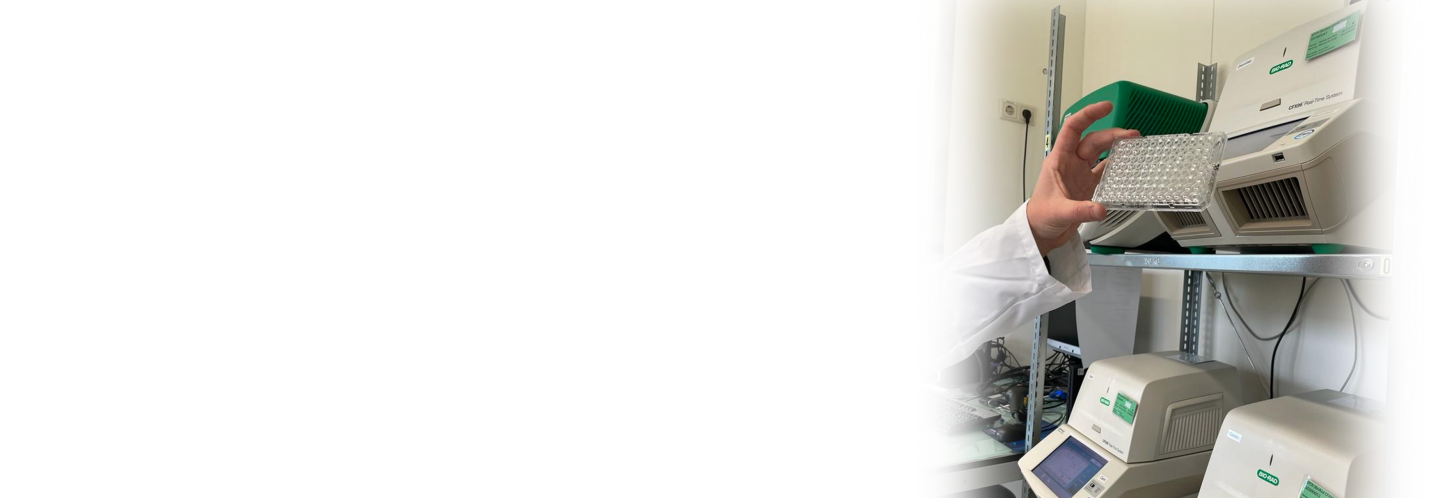
What did the Venture Challenge teach you about building a company?
Neerken explains that there were a lot of great ideas at Philips, which made people wonder, “can we get value out of this?”. The Venture Challenge helps you answer this question. ‘Building a business strategy is so different from what I was used to as a researcher’, she says. Van de Wiel continues:
‘We didn’t know how Philips viewed the idea of a spinoff when we participated in the Venture Challenge with Polaris, and suddenly, we had to think about the whole business case as a stand-alone company and who would become the CEO. On top of that, it pushed us to think about whether we really saw ourselves starting a company. Years later, all the knowledge we gained proved really valuable for establishing InnoSIGN’.
What would you tell people who are thinking about participating in the Venture Challenge?
‘My first question is, “why are you doubting?”’, says Van de Wiel. And then he adds, ‘You do need to have a certain mindset and dare to stick your neck out.’ Neerken: ‘It is a good way to find out if this is what you really want to do. And, you will get good feedback if your idea is a viable business proposition.’
